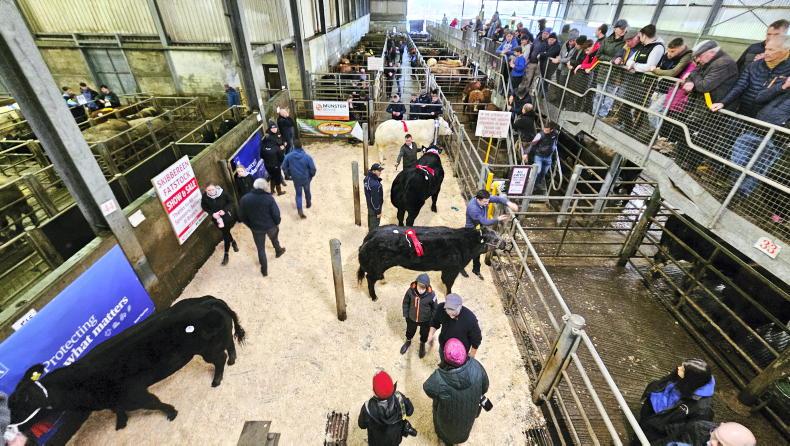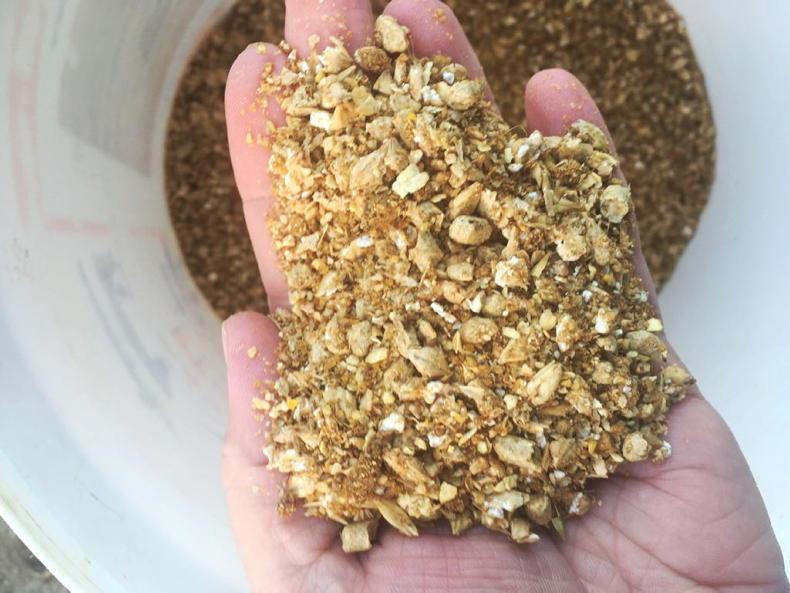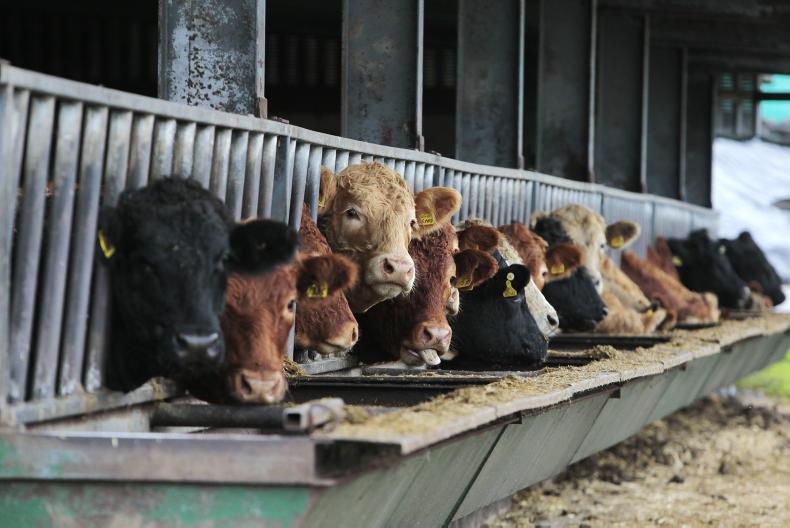Farm covers around the country have been steadily building for the last few weeks and based on the weather forecast, the middle and end of next week should see first-cut silage teams roar into action around the country.
Grass has been growing at rates in the high 60s recently and will continue to do so, with growth jumping again next week. Fields you walk today will have almost 2cm more grass on them in a week’s time – will that be too strong?
How far away from these fields are you in days? Many are hesitant to have contractors come in and remove small amounts of surplus, but it’s very easy to add extra silage ground when the crew is on the farm anyway. Think how valuable every bale could potentially be in future.
It may not be the heaviest covers that we skip now. For example, on farms that are operating AI, it could be the furthest paddock from the pen that we skip to make life that bit easier. If we have to graze a heavier cover for a few days so be it. We should be able to graze out paddocks well right up until Saturday – there’s rain promised on Sunday in most places. Using a grass wedge is the ideal way to work out what we can skip as it’ll flag potential holes in our supply that could come about by skipping paddocks.
However, given the growth that is likely next week, low grass supply shouldn’t be an issue. I would see no issue in removing grass such that farm cover drops to 500kg DM/ha on a relatively highly-stocked farm (or 10 to 12 days ahead).
Assess your silage fields early next week too. Nitrates will be an issue in crops this year and with the weather window coming many farmers will be eager to lift silage, but worried as their fertiliser went out late.
While the rule of thumb is two days per unit spread – this is dependent on a fixed growth rate and only a guide. A good wilt will also do a lot to reduce the risks.
The best test will be a nitrates test from your adviser or consultant. Be sure to give him or her plenty of notice that you will need a sample analysed – it will be a busy week for all in the sector.


Co Kerry
System suckler/calf to beef
Soil type variable
Farm cover (kg DM/ha) 2,000
Demand (kg DM/ha/day) 47
Growth (kg DM/ha/day) 109
Cows are currently grazing 24-hour paddocks to try to save the ground from being poached. It also works well as we graze the cows at opposite sides of the yard, and when they’re being moved we can pick out the cows for AI. We have heavy covers on some parts of the farm, but the biggest problem is getting in on these to graze them off. Ground is very wet. I am not achieving the clean-outs I was hoping for. If we get a break in the weather and there is good drying I would like to get most of the heavier paddocks cut and taken out. Most of the heavy covers that we’re grazing now are being trampled into the ground. We are lucky enough in that we have our own equipment for baling silage, so I can take it out quickly. This time last year, we had at least 50 bales made by now, all from paddocks that had got too strong. At the moment there are only a couple of bales of roughage left for the bulls.

Co Meath
System suckler to beef
Soil type heavy clay
Farm cover (kg DM/ha) 757
Demand (kg DM/ha/day) 38
Growth (kg DM/ha/day) 89
Growth has remained strong over the past week. There is a fair good cover of grass on the farm at present but all of it will be needed as my demand is building rapidly, with cows being turned out as they calve. The majority of paddocks have received at least 60 units of nitrogen so far and I hope to go with another 30 units this week. I have over 160 bales of top-quality silage taken out so far. These bales will be set aside for young bulls next autumn. My main first cut will be ready for cutting in two weeks and it is growing very well. I have only 17 cows left to calve and the majority of them will hopefully have calved by the end of next week. Cows are being turned out on paddocks as they calve. They remain in small groups for a couple of days until their calves get stronger and then they join the main group. I have a few different groups of bulls on ad-lib feeding for finishing under 16 months and they are doing very well.

Co Limerick
System suckler to weanling
Soil type highly variable
Farm Cover (kg DM/ha) 476
Demand (kg DM/ha/day) 30
Growth (kg DM/ha) 24
All stock are now out – 36 cows and calves are grazing high-quality pasture. So far this year, I have 12t of urea spread on the farm across both the silage and the grazing ground. Growth rates have continued to be very poor. The silage ground was closed on 12 April, and received 100 units of N in the form of urea. I am very disappointed with the crops in the fields currently and I am hoping the warmer weather will lift them over the next few weeks as I plan to cut the first week in June.
The bull was let off with the cows on 20 April and cows are coming in heat nicely. I have picked out six of my heifers that I plan to use AI on in the coming weeks. I want to buy five or six more heifers which I will also use AI on. With these extra heifers coming on board next year, this would allow me to increase cow numbers and allow for a number of culls. I am aiming to calve 40 cows next year.


Co Leitrim
System suckler to weanling/beef
Soil type mostly heavy
Farm Cover (kg DM/ha) 1,300
Demand (kg DM/ha/day) 33
Growth (kg DM/ha) 12
Grass covers have bulked up nicely since I spread two bags of 18-2.5-14/acre across all grazing ground last month. Growth dipped last week with cooler temperatures but cows are going into nice covers of 1,300-1,400kg DM/ha at the moment. Silage ground is moving and getting slurry out with the umbilical system earlier in spring has stood to it.
I carried out a lot of fencing and drainage work on the home farm last year and it has definitely made life easier for me while also increasing grass utilisation. I plan to spread lime on the home block in late summer.
I’ve rented a small block of ground which I intend to cut for silage, helping to restore fodder reserves as I’ve no silage to carry into next winter. Thankfully the weather picked up last month and I didn’t have to purchase any forage as stock were turned out. Calving went well and all cows have been served again. Cows were synchronised.

Read more
Grass+: cool air cools grass growth rates
Farm covers around the country have been steadily building for the last few weeks and based on the weather forecast, the middle and end of next week should see first-cut silage teams roar into action around the country.
Grass has been growing at rates in the high 60s recently and will continue to do so, with growth jumping again next week. Fields you walk today will have almost 2cm more grass on them in a week’s time – will that be too strong?
How far away from these fields are you in days? Many are hesitant to have contractors come in and remove small amounts of surplus, but it’s very easy to add extra silage ground when the crew is on the farm anyway. Think how valuable every bale could potentially be in future.
It may not be the heaviest covers that we skip now. For example, on farms that are operating AI, it could be the furthest paddock from the pen that we skip to make life that bit easier. If we have to graze a heavier cover for a few days so be it. We should be able to graze out paddocks well right up until Saturday – there’s rain promised on Sunday in most places. Using a grass wedge is the ideal way to work out what we can skip as it’ll flag potential holes in our supply that could come about by skipping paddocks.
However, given the growth that is likely next week, low grass supply shouldn’t be an issue. I would see no issue in removing grass such that farm cover drops to 500kg DM/ha on a relatively highly-stocked farm (or 10 to 12 days ahead).
Assess your silage fields early next week too. Nitrates will be an issue in crops this year and with the weather window coming many farmers will be eager to lift silage, but worried as their fertiliser went out late.
While the rule of thumb is two days per unit spread – this is dependent on a fixed growth rate and only a guide. A good wilt will also do a lot to reduce the risks.
The best test will be a nitrates test from your adviser or consultant. Be sure to give him or her plenty of notice that you will need a sample analysed – it will be a busy week for all in the sector.


Co Kerry
System suckler/calf to beef
Soil type variable
Farm cover (kg DM/ha) 2,000
Demand (kg DM/ha/day) 47
Growth (kg DM/ha/day) 109
Cows are currently grazing 24-hour paddocks to try to save the ground from being poached. It also works well as we graze the cows at opposite sides of the yard, and when they’re being moved we can pick out the cows for AI. We have heavy covers on some parts of the farm, but the biggest problem is getting in on these to graze them off. Ground is very wet. I am not achieving the clean-outs I was hoping for. If we get a break in the weather and there is good drying I would like to get most of the heavier paddocks cut and taken out. Most of the heavy covers that we’re grazing now are being trampled into the ground. We are lucky enough in that we have our own equipment for baling silage, so I can take it out quickly. This time last year, we had at least 50 bales made by now, all from paddocks that had got too strong. At the moment there are only a couple of bales of roughage left for the bulls.

Co Meath
System suckler to beef
Soil type heavy clay
Farm cover (kg DM/ha) 757
Demand (kg DM/ha/day) 38
Growth (kg DM/ha/day) 89
Growth has remained strong over the past week. There is a fair good cover of grass on the farm at present but all of it will be needed as my demand is building rapidly, with cows being turned out as they calve. The majority of paddocks have received at least 60 units of nitrogen so far and I hope to go with another 30 units this week. I have over 160 bales of top-quality silage taken out so far. These bales will be set aside for young bulls next autumn. My main first cut will be ready for cutting in two weeks and it is growing very well. I have only 17 cows left to calve and the majority of them will hopefully have calved by the end of next week. Cows are being turned out on paddocks as they calve. They remain in small groups for a couple of days until their calves get stronger and then they join the main group. I have a few different groups of bulls on ad-lib feeding for finishing under 16 months and they are doing very well.

Co Limerick
System suckler to weanling
Soil type highly variable
Farm Cover (kg DM/ha) 476
Demand (kg DM/ha/day) 30
Growth (kg DM/ha) 24
All stock are now out – 36 cows and calves are grazing high-quality pasture. So far this year, I have 12t of urea spread on the farm across both the silage and the grazing ground. Growth rates have continued to be very poor. The silage ground was closed on 12 April, and received 100 units of N in the form of urea. I am very disappointed with the crops in the fields currently and I am hoping the warmer weather will lift them over the next few weeks as I plan to cut the first week in June.
The bull was let off with the cows on 20 April and cows are coming in heat nicely. I have picked out six of my heifers that I plan to use AI on in the coming weeks. I want to buy five or six more heifers which I will also use AI on. With these extra heifers coming on board next year, this would allow me to increase cow numbers and allow for a number of culls. I am aiming to calve 40 cows next year.


Co Leitrim
System suckler to weanling/beef
Soil type mostly heavy
Farm Cover (kg DM/ha) 1,300
Demand (kg DM/ha/day) 33
Growth (kg DM/ha) 12
Grass covers have bulked up nicely since I spread two bags of 18-2.5-14/acre across all grazing ground last month. Growth dipped last week with cooler temperatures but cows are going into nice covers of 1,300-1,400kg DM/ha at the moment. Silage ground is moving and getting slurry out with the umbilical system earlier in spring has stood to it.
I carried out a lot of fencing and drainage work on the home farm last year and it has definitely made life easier for me while also increasing grass utilisation. I plan to spread lime on the home block in late summer.
I’ve rented a small block of ground which I intend to cut for silage, helping to restore fodder reserves as I’ve no silage to carry into next winter. Thankfully the weather picked up last month and I didn’t have to purchase any forage as stock were turned out. Calving went well and all cows have been served again. Cows were synchronised.

Read more
Grass+: cool air cools grass growth rates























SHARING OPTIONS